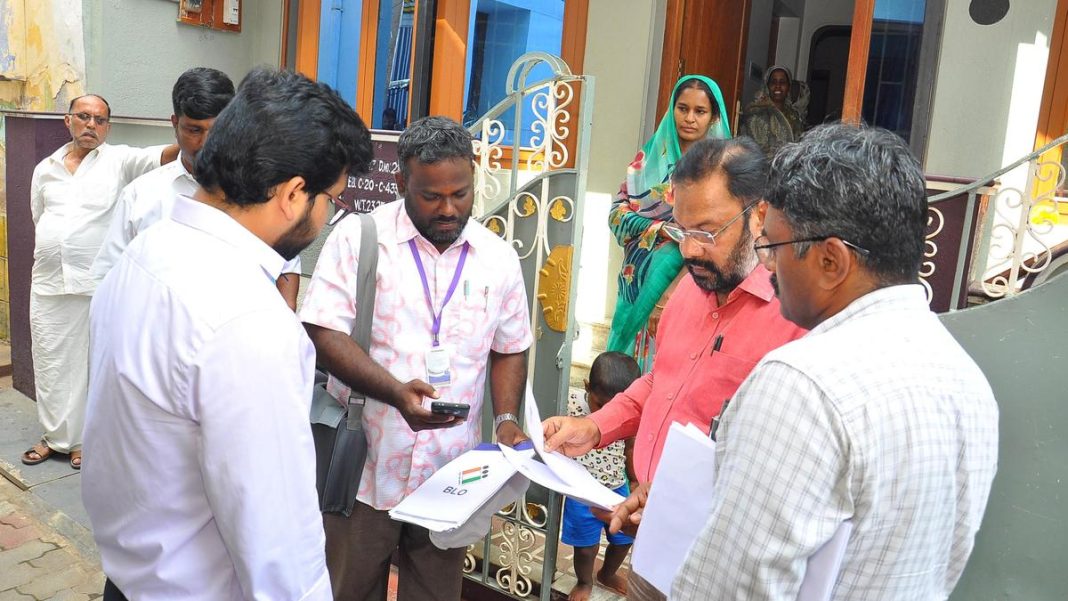New Delhi: The Election Commission of India (ECI) has announced a significant milestone in the ongoing Special Electoral Roll Revision (SIR) process, revealing that enumeration forms have been successfully distributed to 73% of eligible voters during Phase 2. This crucial phase is a vital step in ensuring the accuracy and inclusivity of the nation’s electoral rolls, a cornerstone of India’s democratic framework.
The SIR initiative aims to update voter lists by enrolling new eligible voters, making corrections, and removing duplicate or deceased entries. The meticulous distribution of enumeration forms, which include various formats like Form 6 for new enrolments, Form 7 for objections to proposed deletions, and Form 8 for corrections and transfers, is paramount to this exercise. The ECI’s latest update reflects considerable progress in reaching out to the vast electorate across different regions, setting the stage for subsequent verification and finalisation processes.
The Imperative of Accurate Electoral Rolls
The integrity of any election hinges on the reliability of its electoral rolls. An accurate voter list ensures that every eligible citizen can exercise their franchise, while preventing disenfranchisement and electoral malpractice. The distribution of enumeration forms is the grassroots level action that kickstarts this massive logistical undertaking. It allows citizens to proactively engage with the democratic process by updating their details or registering for the first time.
In a diverse country like India, with its dynamic demographics and vast geographical spread, the task of reaching every eligible voter is monumental. The ECI employs thousands of Booth Level Officers (BLOs) who visit households, educate citizens about the importance of electoral registration, and distribute these critical forms. This ground-level outreach is particularly crucial for young first-time voters, migrant labourers, and women who may have recently moved due to marriage, ensuring their names are correctly reflected in the electoral database.
The SIR process is not merely a bureaucratic exercise; it is a fundamental democratic right. By simplifying the process of updating voter information, the ECI aims to empower citizens and bolster public trust in the electoral system. The 73% distribution figure for Phase 2 indicates a commendable effort in this direction, underscoring the commitment to a transparent and inclusive electoral framework.
Phase 2 Progress and Operational Nuances
Phase 2 of the SIR process focused on specific regions and demographic segments identified for intensive outreach. The achievement of distributing forms to nearly three-quarters of the targeted voters speaks volumes about the robust planning and execution by the election machinery. This phase involved targeted campaigns, public announcements, and the establishment of special camps to facilitate the distribution and collection of forms.
While the 73% figure is significant, the ECI remains focused on covering the remaining percentage. Reaching remote areas, populations in rapidly urbanizing clusters, and individuals with limited access to information often presents unique challenges. Issues such as literacy levels, accessibility, and awareness campaigns play a critical role in determining the success of such initiatives.
An official from the Election Commission, speaking anonymously to TrendLyric.com, emphasised the dedication behind the numbers. “Our BLOs are the backbone of this exercise. They often work in challenging conditions, ensuring no eligible voter is left out. The 73% distribution in Phase 2 is a testament to their unwavering commitment and the increasing public awareness. We are actively strategising to cover the remaining segment through intensified drives and community engagement programs,” the official stated, highlighting the continuous efforts to achieve full coverage.
The successful distribution of forms paves the way for the next crucial steps: the collection of filled forms, their thorough verification by electoral authorities, and eventually, the publication of the draft electoral rolls. This draft roll then opens up a period for claims and objections, allowing citizens to rectify any discrepancies before the final publication.
Ensuring an Inclusive Future
The ongoing SIR, with its diligent enumeration form distribution, is a testament to India’s commitment to democratic principles. Each completed form contributes to a more representative and accurate electoral roll, strengthening the foundations of fair elections. The 73% distribution in Phase 2 is not just a statistic; it represents millions of potential voters who have been brought closer to participating in the nation’s democratic journey.
As the Election Commission moves towards the subsequent phases of data entry, verification, and the final publication of the electoral rolls, the collective effort of citizens, political parties, and civil society organisations will be critical. The ultimate goal is to present a comprehensive, error-free voter list that truly reflects the electorate, enabling every voice to be heard in the world’s largest democracy.




